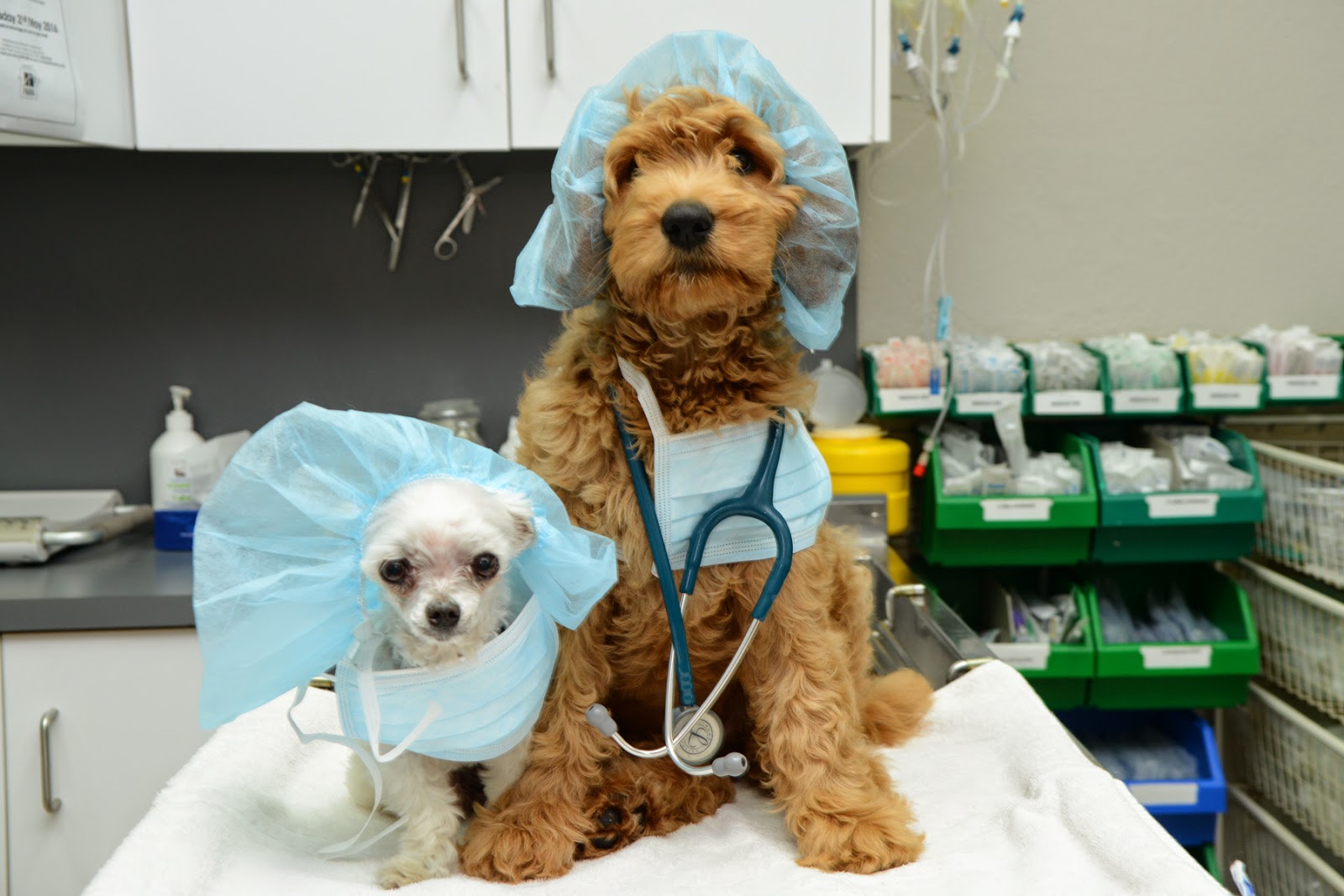 |
| If dogs could be vets... |
WARNING: Surgical images in today's post. Some readers might be grossed out so please scroll carefully.
Last
night the University of Sydney’s veterinary surgical team put on a wonderful
series of talks themed around urogenital surgery. Sure, it’s not everyone’s
idea of the perfect Wednesday night, but if like many vets you spend much
time examining and operating on these areas, they are fascinating. And listening to surgical specialists talk is a beautiful thing. Anyone who can throw phrases like prostatic avulsion and intramural ectopic ureters into sentences that make perfect sense to non-specialists is very talented indeed.
The
audience sat transfixed last night as Dr Laurencie Brunel described
laparoscopic ovariectomy and ovariohysterectomy (OHE) (keyhole desexing of
female animals). Again, maybe not a big deal to some but in companion animal medicine, reproductive surgery is common, it can be life-saving, and if there's a better way to do it we all want to know about it.
Have
you ever wondered why vets don’t perform keyhole surgery? Is this something we
should move towards? Well, if you look at the size of incision made for a
routine spey (especially in cats), one could argue that this is practically
keyhole surgery. [NB the pic below is NOT a cat so this is not illustrating my point!]
 |
| Reproductive tract of a German shepherd dog. Note the "Y" shaped uterus - the ovaries are at the top of the Y near the haemostats or clamps, the arms join at the bifurcation, the uterine body, and the cervix is below. |
But
good vets always look at viable alternatives. The advantages of laparoscopic desexing
are that one has beautiful surgical field magnification – one can see the ovary
in situ, as we did in Dr Brunel’s magnificent videos last night (seriously, I could
have watched these over and over), and the associated vessels. Other advantages
include (debatably) a smaller incision, reduced tissue trauma (i.e. less
overall tissue handling, more precision), diminished pain and faster patient
recovery.
Laparoscopic
desexing is contraindicated in some animals: those with a congenital or
traumatic diaphragmatic hernia where insufflation of the abdomen with CO2
would leak into the thorax and inhibit ventilation; animals in oestrus; and
where pyometra (pus in the uterus) is present as the uterus is very friable and
the incision is tiny. One would have to be a magician to get a pyo out of a
keyhole incision.
 |
| This is also a uterus - but the dog (in this case a chihuahua) has pyometra. The arms of the uterus are distended with pus. The uterine body is just below the crease in the uterus at the top of the photo. The ovaries are still intra-abdominal in this pic, at the ends of the arms which are at the bottom of the pic. Not a uterus I would want to be pulling through a keyhole incision. |
Obviously
another down side is the need for specialist equipment which requires some
outlay of cashola. Medical equipment ain't cheap. Not to mention training. Initially one would be much slower at desexing
– increasing the anaesthetic duration – and be a bit awkward. Is that a reason
not to explore this technology?
Anaesthetic-wise,
as with all patients we should be making sure that the patient is ventilating
and oxygenating well – and remember that abdominal insufflation can increase
pressure and reduce cardiac output (insufflation pressure should be
<15mmghg be="" may="" o:p="" positive="" pressure="" required.="" ventilation="">
Also…all
patients are clipped as if for an exploratory laparotomy (that’s the opposite
of keyhole – where we open the patient from the bottom of the rib cage down to
the pelvis, enabling full exposure). Why? In case of complications we don't want to have to prep the patient again. We also
want the patient to have an empty bladder, as laparoscopy involves inserting
trochars into the abdomen and a full bladder could be easily perforated.
So
laparoscopic desexing, depending on which instruments one has available,
involves palpating the abdomen carefully to avoid the spleen, insufflating the
abdomen, inserting the instruments (through a single or multiple ports),
visualise the ovaries, grasping them, severing the vessels using electrocautery
and removing them through the hole.
Potential
complication include trauma to the spleen, reduced visualisation of the ovary
due to haemorrhage (tilting the table so the patient’s head is elevated can be
helpful), dropping of the ovary back into the abdomen once removed (this
necessitates converting the laparoscopy to an exploratory laparotomy), burning
of the peritoneum with bipolar electrocautery/vessel sealing device, haematoma
at site of placement of a spey hook if used (this is avoided by using a
taper-cut needle to suspend the ovary), and leakage CO2 from the
operating cannula incision, causing the abdomen to deflate like a tired old balloon
and making visualisation really hard.
Discovery
of pyometra or a diaphragmatic hernia are both very good reasons for converting
to a laparotomy.
So
there you have it. In general practice within Australia, the standard technique
is OHE via a small laparotomy incision. Partly because most vets are trained in
this technique, they can do it quickly, if there are complications the incision
can be extended and that’s how it has always been done.
But skilled
practitioners can use laparoscopy to perform the procedure in the same time. It
can also be used to perform prophylactic gastropexy, removal of bladder stones,
biopsies and insertion of some feeding tubes. It will be interesting to see the
uptake of this technology, used already for decades in the human field, in
veterinary practice. (But if anyone offers you the opportunity to watch a video
of a laparoscopic spey, I recommend it).







.jpg)